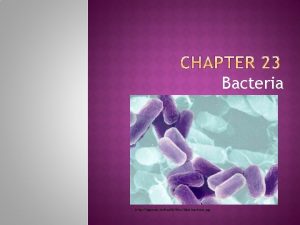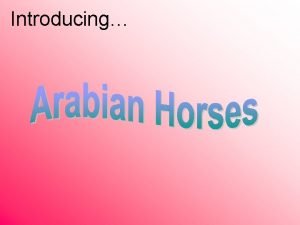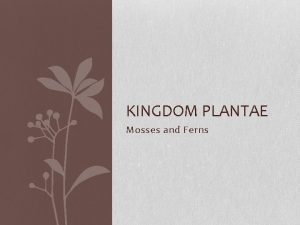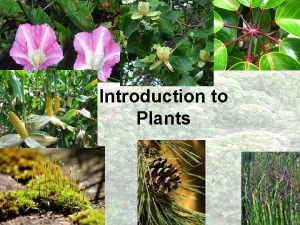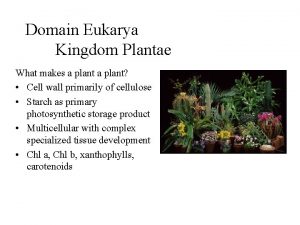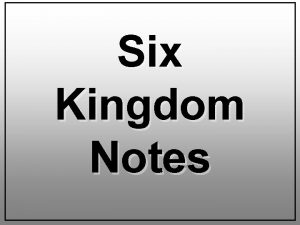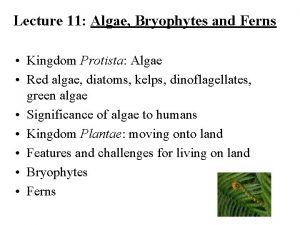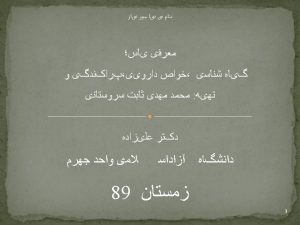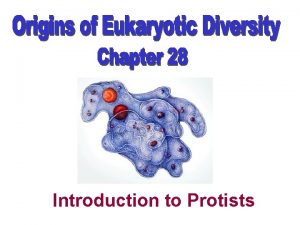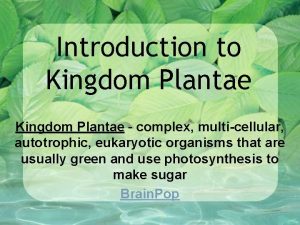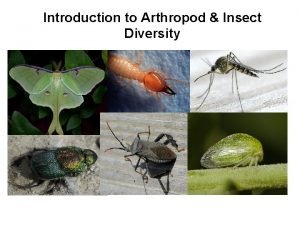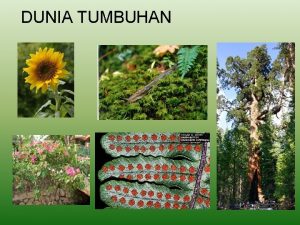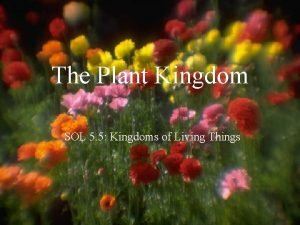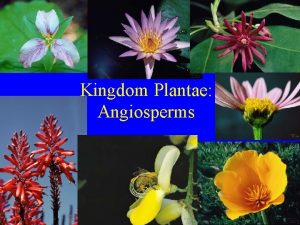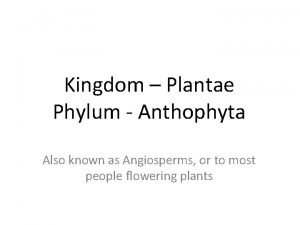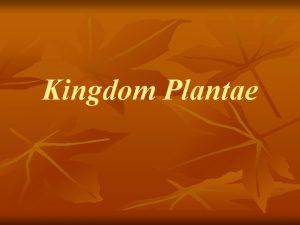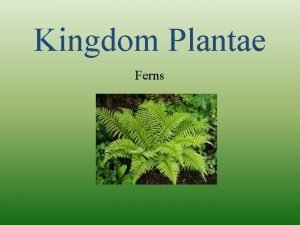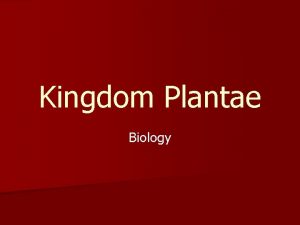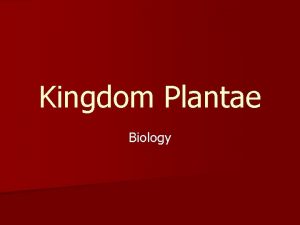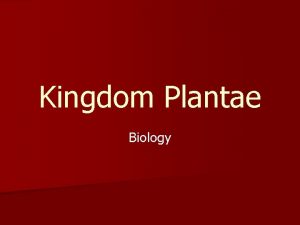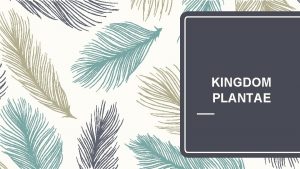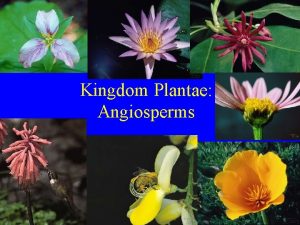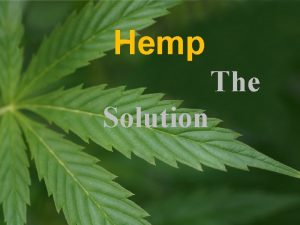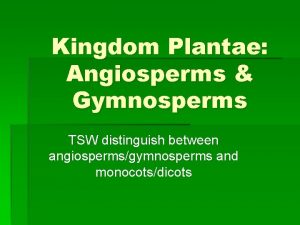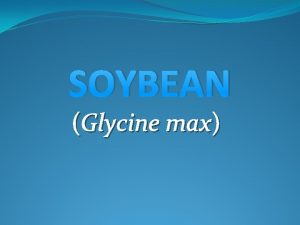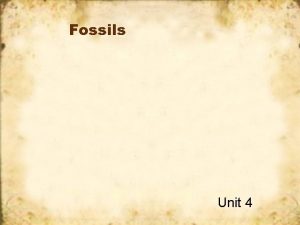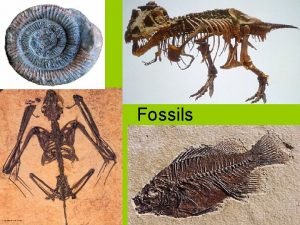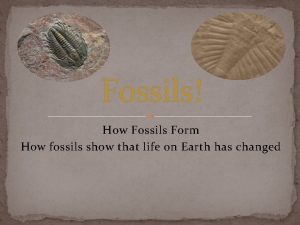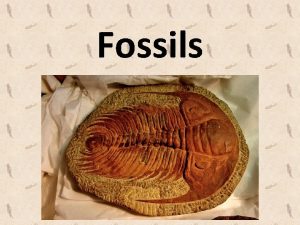Kingdom Plantae Angiosperms History Oldest known fossils date




























- Slides: 28

Kingdom Plantae Angiosperms


History • Oldest known fossils date back to about 132 million years ago • Molecular data show they evolved around 125 – 180 million years ago • Co-evolved with flying insects as polinators

General Characteristics • Produce covered seeds that are enclosed in a fruit • Flowering plants include many species of trees, shrubs, flowers, vegetables, and grasses • Are the most widespread of all land plants and are found in all types of habitats • Sporophyte generation is dominant • Have coevolved with insects to help pollination • Dominate the earth’s surface compared to other plants

Unique Characteristics • Fruits and Flowers!! • These two structures are key to angiosperm success • Flowers attract pollinators allowing for greater genetic distribution; pollination does not depend on the randomness of the wind • Fruits attract predators. The seed within a fruit typically can withstand being digested so seeds are dispersed in animal feces (comes with it’s own fertilizer!) • Flowers also contain ovaries which surround and protect the seeds

Structure


Leaves

Flowers A. Female Reproductive Structures • Pistil: Contains the stigma, the style and the ovule(s) within the ovary • Stigma: Captures and traps the pollen with a sticky or hairy substance • Style: Allows the pollen tube to travel down to the ovule • Ovary: Encloses and surrounds the ovule a. Contains one or more ovules for double fertilization b. The ovule contains the female gametophyte and the polar nuclei


Flowers B. Male Reproductive Structures • Stamen: Contains the anther and the filament • Anther: Undergoes meiosis producing pollen grains • Filament: Supports the anther C. Other Parts • Receptacle: The base where the petals, ovary and sepals are attached • Sepals: They are green and they enclose and protect the developing flower • Petals: They are brightly coloured and scented to attract insects, bats and birds




Flower Reproduction • The Anther produces pollen which contains two male gametes (sperm) • The pollen is picked up by a pollinator or by the wind and travels to another flower where it sticks to the stigma (it is sticky) • The pollen grain grows a pollen tube down the through the stigma, down the style, and to the ovary • The sperm travel down the tube and double fertilization occurs

• The two sperm fertilize different structures in the ovary. • One sperm fertilizes the egg (N + N = 2 N) to produce the zygote (baby plant) • The other sperm fertilizes the endosperm which has NOT undergone meiosis and is thus 2 N + N = 3 N. • Endosperm provides nutrition for the developing embryo

Diversity • Angiosperms are categorized in many ways: • monocots and dicots • woody and herbaceous plants • annuals, biennials, and perennials • An angiosperm can belong to more than one category.


Monocots and Dicots • Monocots and dicots are named for the number of seed leaves, or cotyledons, in the plant embryo. Monocots have one seed leaf, and dicots have two. • A cotyledon is the first leaf or the first pair of leaves produced by the embryo of a seed plant.



Woody vs Herbaceous Plants • Plant stems that are smooth and nonwoody are characteristic of herbaceous plants. • Woody plants include trees, shrubs, and vines.

Annuals, Biennials, and Perennials • Annuals are plants that complete a life cycle in one growing season. • Biennials complete their life cycle in two years. In the first year, they germinate and grow roots, short stems, and sometimes leaves. In the second year, they grow new stems and leaves, produce flowers and seeds, and die. • Perennials live for more than two years.


Evolutionary Adaptations Vascular Tissues • Xylem: Tracheids and vessel elements transport H 2 O and nutrients to the plant • Phloem: Sieve tubes transport sugars from photosynthesis to the rest of the plant B. Meristems • Apical and lateral meristems provide growth in height, length, and width of roots and stems

More • Dominant sporophyte generation produces and protects the male and female gametophytes • Broad leaves have great surface area for photosynthesis and are covered by a waxy cuticle to prevent H 2 O loss • Leaves have stomata to prevent H 2 O loss and regulate gas exchange

Ecological Significance: • Are a dominant sourced of food in the food chain • Fruit, nectar, herbaceous vegetation… • Dominant Land Plant so they contribute greatly to global oxygen levels • Decrease Greenhouse Gases • Provide Habitat (huge significance – some organisms ONLY ever live in the trees) • Provide minerals to the soil (Alders have symbiotic relationship with bacterium that fixes nitrogen) • Close ecological symbiotic relationships with other organisms such as pollinators • Important in the water cycle due to transpiration

Economic Importance • Food crops (fruit and vegetables) • Are a source of pulp for paper products • Used as a fuel source • Provide wood for homes and shelter • Source of fabric
 Cool protists
Cool protists Share
Share Domain of plantae
Domain of plantae Old kingdom middle kingdom new kingdom
Old kingdom middle kingdom new kingdom Old kingdom middle kingdom new kingdom
Old kingdom middle kingdom new kingdom Old kingdom middle kingdom new kingdom
Old kingdom middle kingdom new kingdom Mentohotep
Mentohotep The earliest fossils date back to about when?
The earliest fossils date back to about when? The oldest known bronze tomb effigy is of
The oldest known bronze tomb effigy is of The epic of gilgamesh is the world's oldest known
The epic of gilgamesh is the world's oldest known Oldest known horse
Oldest known horse Biology taxonomy tree
Biology taxonomy tree Disadvantages of coniferophyta
Disadvantages of coniferophyta Plant kingdom
Plant kingdom Lycodiophyta
Lycodiophyta Plants
Plants Protista, fungi, plantae, animalia *
Protista, fungi, plantae, animalia * Characteristic of kingdom plantae
Characteristic of kingdom plantae Kingdom characteristics chart
Kingdom characteristics chart Plantae prokaryotic or eukaryotic
Plantae prokaryotic or eukaryotic Ferns and algae kingdom
Ferns and algae kingdom Cladogram of kingdom animalia
Cladogram of kingdom animalia Subkingdom of kingdom plantae
Subkingdom of kingdom plantae Kingdom plantae
Kingdom plantae Which kingdom is autotrophic
Which kingdom is autotrophic Kingdom plantae chart
Kingdom plantae chart Gambar daur hidup paku
Gambar daur hidup paku Diagram of kingdom plantae
Diagram of kingdom plantae Plantae kingdom characteristics
Plantae kingdom characteristics







